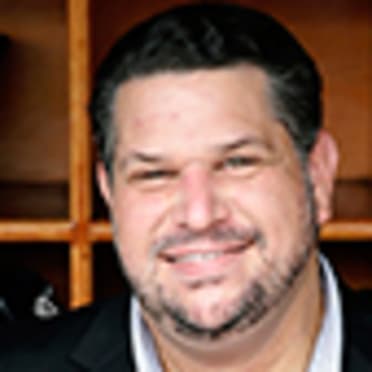The latest on the CBA negotiations
With the Collective Bargaining Agreement set to expire at 11:59 ET tonight, Major League Baseball and the MLB Players Association are scheduled to meet again today in Irving, Texas.
The two sides met Tuesday morning at 10 a.m. CT, as the MLBPA made an economic proposal during a brief, 30-minute meeting. The owners and league negotiators went back to their hotel to review and discuss the proposal, returning to the Four Seasons at 3 p.m. for additional meetings.
Following a 35-minute meeting, the talks broke off for an hour, giving both sides time to meet on their own for further discussion. That was followed by a 45-minute meeting between Deputy Commissioner Dan Halem, Rockies owner and chairman of the league’s labor policy committee Dick Monfort, MLBPA lead negotiator Bruce Meyer and pitcher Andrew Miller, one of eight players on the union’s executive subcommittee.
According to sources, the MLBPA hasn’t moved away from its original proposal from May, which seeks a major overhaul of the sport’s economic system, including core components that have existed in the CBA for decades:
• Six-year free agency (first agreed to by union leader Marvin Miller in 1976)
• Super-Two eligibility (a feature of every agreement since 1990)
• Revenue sharing (been part of each agreement dating back to 2002)
Sources said the MLBPA is seeking a significant reduction in revenue sharing, which would make it more difficult for small-market clubs to remain competitive. The same can be said for reducing the free-agent eligibility from six years of big league service time to five years.
One area that saw some slight movement Tuesday was expansion of the postseason, a source said, as the union introduced its own version of a new playoff system.
MLB made three proposals last week that included a number of concessions to the players:
• The elimination of the current qualifying offer system, which would remove Draft-pick compensation attached to any free agent
• A Draft lottery similar to the one used by the NBA
• The universal DH, which would add 15 everyday jobs for hitters in the NL; the average salary for a DH in 2021 was $9.2 million
• An increase to the minimum player salary
• An increase in the CBT threshold
The MLBPA did not discuss core economics on Monday, sources said, saving that for Tuesday’s meeting. The latest proposal included no movement on the key economics from the players’ pitch from last May, leaving little bargaining room for the two sides as the clock continued to tick toward Wednesday night’s expiration.
One person involved in negotiations on the league’s side indicated that there did not seem to be much urgency from the union.
Recent comments from a pair of veteran players would seem to back up that sentiment.
“We have three months to really hash this out, and I don’t fear us not starting on time or anything like that,” National League Most Valuable Player Bryce Harper told Philadelphia’s WIP radio on Nov. 19. “The cool thing is, if something does happen, we can always sign a year extension of what we had this year. That’s always possible.”
Braves pitcher Charlie Morton took it a step further, telling The Athletic last week that the Dec. 1 CBA expiration doesn’t represent a true deadline to get a deal done.
“[A] lot of the time, especially in baseball, you have these deadlines that aren’t necessarily hard deadlines, that aren’t precursors to something better or worse,” Morton said. “But they’re there just to kind of give both sides a little sense of urgency. So no, I don’t necessarily think that the deadlines [mean that much]. This [Dec. 1] deadline is for the lockout, but obviously you hope you have something done Jan. 1. If not, then you hope you have something done certainly by the time pitchers and catchers are supposed to report, because then that’s going to start to affect things to a severe degree.
“Really, most players’ offseasons aren’t going to change because of this [Dec. 1 deadline].”
While the league and the union were meeting in Texas on Tuesday, another free agent was finalizing a nine-figure contract, the latest in a rash of signings that has energized the sport this month.
Javier Báez’s reported six-year, $140 million deal with the Tigers marked the sixth free-agent contract of the winter worth at least $100 million. That’s twice as many as players signed last winter, while the number of deals worth at least $50 million has already spiked from six to 11 -- and it’s only Dec. 1.
Those deals include the ninth $300 million contract in history (Corey Seager, 10 years, $325 million contract with the Rangers) and the highest average annual value (Max Scherzer, three years, $130 million -- $43.3 million per year -- with the Mets).
Clubs have spent more than $1.6 billion on free agents already this winter, a number that swells past the $2.1 billion mark when you factor in extensions for players, including Wander Franco ($182 million), José Berríos ($131 million), Byron Buxton ($100 million) and Sandy Alcantara ($56 million).
The big spenders haven’t been the usual suspects, either. The Rangers have shelled out more than $560 million for four players (Seager, Marcus Semien, Jon Gray and Kole Calhoun), while the Tigers have spent $217 million on Báez and Eduardo Rodriguez.
The Mariners and Blue Jays each signed a starting pitcher for more than $100 million, and the Mets -- who haven’t been to the postseason since 2016 -- have spent more than $250 million on four players, including Scherzer’s history-making deal. Even the Marlins have joined the fray, signing Avisaíl García to a $53 million contract, the fourth-largest free-agent deal in club history.
